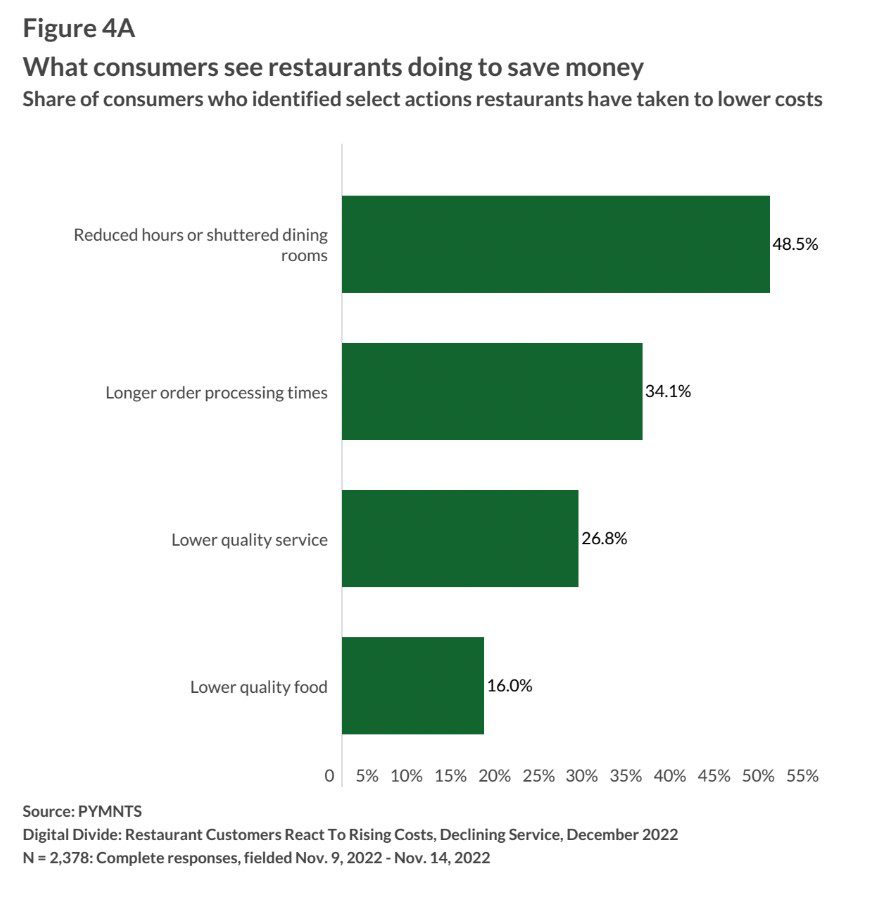Restaurant Industry Cuts Hours, and Consumers Take Note

While diners are aware of price increases, they’ve also noticed reduced hours in the restaurant industry.
By the Numbers
This, according to the latest edition of PYMNTS’ Digital Divide study, “The 2022 Restaurant Digital Divide: Restaurant Customers React to Rising Costs, Declining Service,” which surveyed 2,378 U.S. restaurant patrons to see what they saw restaurants doing to lower costs amid inflation.
As much as inflation-fueled food costs have dominated industry news coverage, the report revealed that 49% of diners also mentioned reduced operating hours or shuttered dining rooms in recent months as establishments look to make ends meet.
The insight is not only a turn-off to would-be customers, but also indicates that eateries are missing out on sales opportunities.

The Data in Context
Certainly, conditions are not ideal for restaurants at the moment, especially for the so-called little guys or independent players. According to research from PYMNTS’ study, “Main Street Health Survey Q4 2022: SMBs Brace For A Recession,” which compiled responses from 500 U.S.-based businesses in October and November, the share of restaurants in the sector expecting year-over-year revenue increases has fallen 10 percentage points from a year ago.
Even as restaurants are looking to cut their spending, so are their customers, with rising prices prompting many to reevaluate their habits. The cost of eating outside the home in October rose an average 8.6% year over year, compared to the overall 7.7% cost-of-living increase during the same period. Consequently, the Digital Divide study noted, about one-third of consumers are eating out less frequently.
Counterintuitively, small restaurants may be better able to take on these challenges if they raise their prices than if they continue trying to absorb this inflation.
“I have been to numerous mom-and-pop restaurants, and I love going to them and supporting them, and when I look at their pricing, I am just amazed at how inexpensive it is,” Nomie Hamid, founder and CEO of digital food hall company Virtual X Kitchen, noted in an interview with PYMNTS’ Karen Webster as part of our SMB TV series.
“But then I see that they’re working on very extreme skeletal shifts, where they have only two or three people working … where they could use other bodies. But why aren’t the other bodies there?”
He added that the “fear factor” of losing customers is keeping them from implementing the price increases they need to give them room in the budget to keep the restaurant staffed.